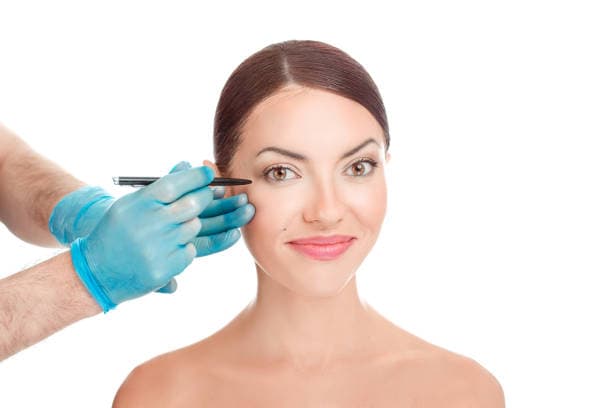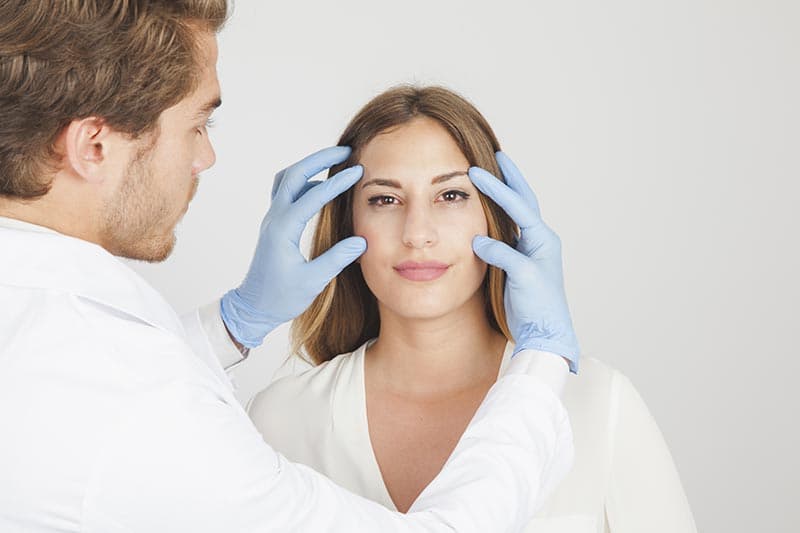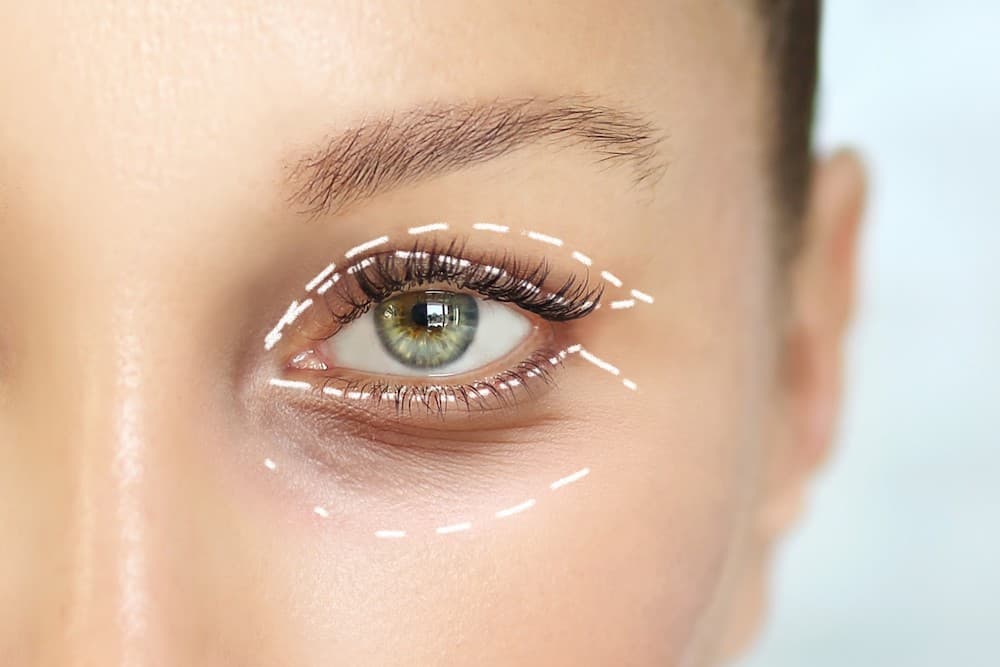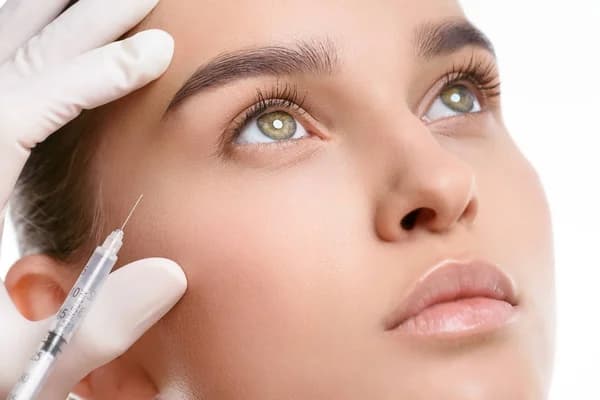When considering options for rejuvenating the eye area, two popular procedures often come to mind: blepharoplasty and Botox. Blepharoplasty, commonly known as eyelid surgery, is a surgical procedure aimed at removing excess skin, fat, and muscle from the eyelids to create a more youthful and rested appearance. On the other hand, Botox involves non-surgical injections that temporarily relax the muscles around the eyes, reducing the appearance of crow's feet and fine lines. While blepharoplasty offers more permanent results, Botox provides a less invasive option with quicker recovery time, making it a popular choice for those seeking a temporary solution to aging signs around the eyes.

The difference between Botox & Blepharoplasty
Blepharoplasty and Botox injections are two popular cosmetic procedures aimed at rejuvenating the eye area, but they differ significantly in their approaches, outcomes, and longevity. Understanding these differences can help individuals make informed decisions about which treatment best suits their needs.
Blepharoplasty addresses issues such as droopy or sagging eyelids, puffiness, and under-eye bags, which can make a person look tired or older than they are. Blepharoplasty is typically performed under local anesthesia with sedation or general anesthesia, depending on the extent of the surgery. The surgeon makes incisions along the natural creases of the eyelids to minimize visible scarring. In contrast, Botox injections are a non-surgical treatment that involves injecting botulinum toxin into specific muscles around the eyes. Botox works by temporarily paralyzing these muscles, which reduces the appearance of dynamic wrinkles such as crow’s feet and fine lines. The procedure is quick, typically taking about 10 to 15 minutes, and involves minimal discomfort.
The primary difference between blepharoplasty and Botox lies in their invasiveness and longevity. Blepharoplasty is a surgical procedure with a longer recovery time and more permanent results, making it suitable for those with significant excess skin or fat around the eyes. On the other hand, Botox is a non-surgical option with minimal downtime and temporary results, ideal for individuals looking to reduce fine lines and wrinkles without undergoing surgery.
Both procedures have their own set of risks and benefits. Blepharoplasty carries surgical risks such as infection, scarring, and changes in eyelid sensation, while Botox can cause side effects like bruising, swelling, and asymmetry. It is crucial for individuals to consult with qualified professionals to determine the most appropriate treatment based on their specific concerns and goals.

Blepharoplasty or Botox: which one is right for me?
Choosing between blepharoplasty and Botox depends on your specific aesthetic goals and concerns. Both procedures aim to rejuvenate the eye area but in different ways and for different issues. When deciding between blepharoplasty and Botox, consider the nature of your concerns. If you have significant eyelid sagging or puffiness, blepharoplasty might be the better option as it addresses these issues more effectively and provides longer-lasting results. However, if your main concern is fine lines and wrinkles around the eyes, Botox could be the right choice due to its ability to smooth these lines with minimal downtime. Each procedure includes:
Blepharoplasty
Blepharoplasty, commonly referred to as eyelid surgery, is a cosmetic surgical procedure designed to improve the appearance of the eyelids. This procedure can be performed on the upper lids, lower lids, or both, depending on the patient's needs and desired outcomes. The primary goal of blepharoplasty is to remove excess skin, fat, and sometimes muscle from the eyelid area, which can help to correct droopy or sagging eyelids, reduce puffiness, and eliminate under-eye bags. These changes can result in a more youthful, alert, and refreshed appearance.
The procedure typically begins with a consultation where the surgeon assesses the patient's eyelid structure, skin type, and overall health to determine the best approach. During the surgery, incisions are made along the natural creases of the eyelids to minimize visible scarring. For the upper eyelids, the incision is usually made within the natural fold, while for the lower eyelids, it is often made just below the lash line or inside the lower lid. Through these incisions, the surgeon removes or repositions excess fat, tightens muscles, and trims away surplus skin. The incisions are then closed with fine sutures, which are removed after a few days.
Recovery from blepharoplasty varies from person to person but generally involves some swelling, bruising, and discomfort for the first week or two. Patients are advised to keep their head elevated, apply cold compresses, and avoid strenuous activities to aid in the healing process. Most people can return to their normal activities within 10 to 14 days, although complete healing and the final results may take several weeks to months.

Botox Injection
Botox injections around the eyes, commonly used to reduce the appearance of crow's feet and fine lines, have become a popular non-surgical cosmetic treatment. Botox, short for botulinum toxin, works by temporarily paralyzing the muscles responsible for creating wrinkles. When injected in small, controlled doses, it relaxes these muscles, resulting in smoother skin and a more youthful appearance.
The procedure begins with a consultation where the practitioner assesses the patient's facial structure, skin condition, and specific concerns. During the treatment, a fine needle is used to inject Botox into the targeted muscles around the eyes. The process is relatively quick, typically taking about 10 to 15 minutes, and involves minimal discomfort. Some practitioners may apply a topical anesthetic to reduce any potential pain.
One of the main advantages of Botox injections is the minimal downtime. Most patients can resume their normal activities immediately after the procedure. However, it is recommended to avoid strenuous exercise, alcohol consumption, and lying down for a few hours post-treatment to prevent the Botox from migrating to unintended areas. Common side effects include mild swelling, bruising, and redness at the injection sites, which usually subside within a few days.
The effects of Botox injections around the eyes become noticeable within a few days, with full results appearing after about one to two weeks. The results typically last for three to four months, after which the treatment can be repeated to maintain the desired look. Regular treatments can also help prevent the formation of new wrinkles by keeping the muscles relaxed over time.

Conclusion
In conclusion, the choice between blepharoplasty and Botox hinges on your specific aesthetic concerns and desired outcomes. Blepharoplasty offers a more permanent solution for significant eyelid sagging and puffiness, providing long-lasting results that can dramatically rejuvenate your appearance. Conversely, Botox is ideal for addressing dynamic wrinkles around the eyes, offering a quick and minimally invasive option with temporary effects. Consulting with a qualified professional can help you determine the best approach, potentially combining both treatments to achieve a comprehensive and youthful look tailored to your individual needs.
Read More